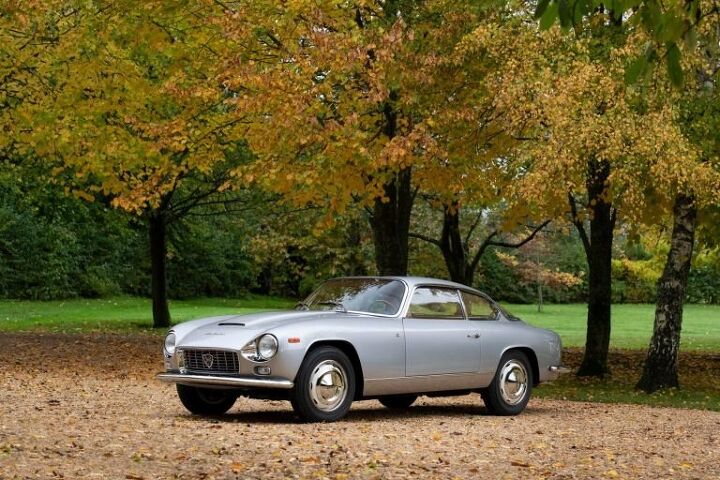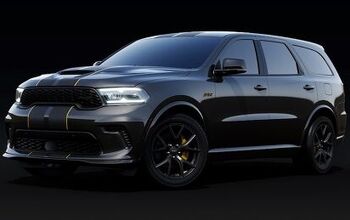Rare Rides: An Incredibly Rare 1965 Lancia Flaminia Super Sport Zagato

By my count, Rare Rides has featured exactly four Lancias in the past. Ranging in scope from two-doors to four-doors, they all contained Italian passion and were designed with a ruler. Today’s coupe bucks the trend: It’s an elegant and curvaceous Flaminia, and more specifically, a very desirable Super Sport Zagato.
Remember when Lancia was a full-line automaker; an independent brand which competed with the likes of Alfa Romeo and Fiat for European (and some North American) car customers? Nor do I, but today’s Flaminia hails from just such an era. During its production, Lancia had eight models on offer, as well as a rally car toward the end of the model’s run.
Speaking of model runs, the Flaminia was a long-lived model. Introduced in 1957 to take over for the very dated looking Aurelia, the Flaminia was offered through 1970. Flaminia ushered in modern styling and new levels of luxury for Lancia customers (and some visitors to Italy, like Queen Elizabeth). But upon its cancellation there would never be another large luxury car from the Lancia brand. The furthest upmarket Lancia reached after 1970 were executive-class cars like the 2000 and Gamma. The latter of those two found the brand already under the control of Fiat, which is where it resides today.
Underneath, the Flaminia was a rework of the old Aurelia chassis with an entirely new body. The front suspension was updated to a double wishbone setup, with an anti-roll bar added for good measure. At the rear, the De Dion tube suspension was kept in place. Only the base sedan version had drum brakes and offered discs optionally, while all other versions used discs at all corners.
Pulling out all the stops for its flagship car, Lancia offered the Flaminia in five body styles. The most basic and affordable version was the sedan (Berlina), which was designed by Pininfarina. There were three different coupes on offer, designed and built by Pininfarina, Zagato, and Carrozzeria Touring. Touring was also drafted to build the convertible. The most exclusive and sixth body style was the presidential landaulet sedan, another Pininfarina creation. But those were not available to consumers.
Powering all Flaminias were two Lancia V6 engines, in either 2.5-liter or 2.8-liter displacement. After 1963 the 2.5 was phased out in favor of the larger engine. While the 2.5 managed 140 horses in its final (triple carb) form, the 2.8 upped that figure to 152. Transmissions on offer included a four-speed manual or semi-automatic manual with automatic clutch called Saxomat. The Saxomat transmission had an interesting history through the Fifties and Sixties, and was implemented by many European manufacturers. Each company branded it with their own name to distance it from its use at other brands. The last cars to use the system appeared in the Nineties. Remember Saab Sensonic?
Zagato’s Flaminia offerings included the Sport and Super Sport. Unlike some of the other coupes, their version had only two seats. Utilizing a shorter wheelbase (14 inches shorter than the sedan), it had an aluminum body and was more curvaceous than other Flaminia coupes. The Sport existed until 1964, when the Super Sport took over. The name change signified usage of the larger 2.8-liter engine. The Super Sport was discontinued after 1967 as the Flaminia neared end of production. In total, 150 of 593 Zagato coupes were Super Sport versions.
Today’s 1965 Super Sport is in beautiful condition, residing in Switzerland. In silver over tan hides, it’s priced upon request.
[Images: seller]

Interested in lots of cars and their various historical contexts. Started writing articles for TTAC in late 2016, when my first posts were QOTDs. From there I started a few new series like Rare Rides, Buy/Drive/Burn, Abandoned History, and most recently Rare Rides Icons. Operating from a home base in Cincinnati, Ohio, a relative auto journalist dead zone. Many of my articles are prompted by something I'll see on social media that sparks my interest and causes me to research. Finding articles and information from the early days of the internet and beyond that covers the little details lost to time: trim packages, color and wheel choices, interior fabrics. Beyond those, I'm fascinated by automotive industry experiments, both failures and successes. Lately I've taken an interest in AI, and generating "what if" type images for car models long dead. Reincarnating a modern Toyota Paseo, Lincoln Mark IX, or Isuzu Trooper through a text prompt is fun. Fun to post them on Twitter too, and watch people overreact. To that end, the social media I use most is Twitter, @CoreyLewis86. I also contribute pieces for Forbes Wheels and Forbes Home.
More by Corey Lewis
Latest Car Reviews
Read moreLatest Product Reviews
Read moreRecent Comments
- SCE to AUX Here's a crazy thought - what if China decides to fully underwrite the 102.5% tariff?
- 3-On-The-Tree They are hard to get in and out of. I also like the fact that they are still easy to work on with the old school push rod V8. My son’s 2016 Mustang GT exhaust came loose up in Tuscon so I put a harbor freight floor jack, two jack stands, tool box and two 2x4 in the back of the vette. So agreed it has decent room in the back for a sports car.
- Kjhkjlhkjhkljh kljhjkhjklhkjh so what?? .. 7.5 billion is not even in the same hemisphere as the utterly stupid waste of money on semiconductor fabs to the tune of more than 100 billion for FABS that CANNOT COMPETE in a global economy and CANNOT MAKE THE US Independent from China or RUSSIA. we REQUIRE China for cpu grade silicon and RUSSIA/Ukraine for manufacturing NEON gas for cpus and gpus and other silicon based processors for cars, tvs, phones, cable boxes ETC... so even if we spend trillion $ .. we STILL have to ask china permission to buy the cpu grade silicon needed and then buy neon gas to process the wafers.. but we keep tossing intel/Taiwan tens of billions at a time like a bunch of idiots.Google > "mining-and-refining-pure-silicon-and-the-incredible-effort-it-takes-to-get-there" Google > "silicon production by country statista" Google > "low-on-gas-ukraine-invasion-chokes-supply-of-neon-needed-for-chipmaking"
- ToolGuy Clearly many of you have not been listening to the podcast.
- 1995 SC This seems a bit tonedeaf.







































Comments
Join the conversation
The sequel to this car is already available to all of us. The new Toyota Supra.
Have to agree with the criticism of the squared-off wheel arches. Now I can't unsee them. I love the rear "not pretending to be a seat" inside cargo shelf. Just the place to lay down your cashmere overcoat and fine Italian leather briefcase.